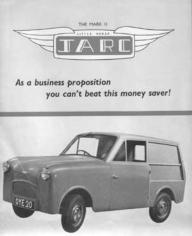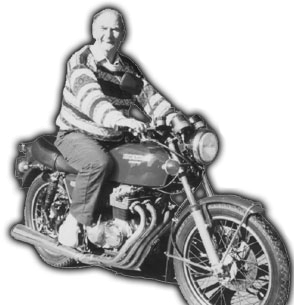
british anzani archive:





Did you all move across to
Anzani?
Most of the key workers from JARC’s
moved to Anzani’s, and I got the plum
job of running the engine test house.
The outboard engines that made up
the bulk of production at that time con-
sisted of the tiny Pilot dinghy motor,
which were produced in batches of 30,
all the work of a single fitter! I could
test run 9 of these at a time, in our long
tank.
The 4 hp Super Single was in
continuous production at the rate of 9 a
day, and was the best selling product. Three men were involved in the
assembly. One did the ‘power head’ (engine), another the underwater unit and
leg, whilst the third member of the team united all the sub assemblies and got it
ready to run. I tested these, six at a time.
The Unitwins both 10 and 15 bhp were in very limited production, and these
could only be run individually. These were built in much the same manner as
the ‘Super’s’. There were no electric start outboards at that time. Alas, I had no
involvement with the hydroplane racing engines. These received only the
personal attention of Charles Harrison and assembly shop foreman Jock
Edwards, who used the test house at weekends.
Of the air cooled engines, the most popular were the Dynastart equipped car
units, as fitted to the Astra. Although I had a test bed fitted with a Walker fan
brake which could measure BHP, this was not used for the production testing.
The motors were just run in neutral for a while, and the tick-over adjusted! The
same applied to the motorcycle units.
I would also test the Motor Hoe and the Iron Horse as needed! These were both
selling well, but again, they got little more ‘testing’ than did the air cooled
motors. No matter what motor was tested however, it was always run long
enough for the heat to act on the gaskets etc., after which all important bolts
were torqued down and brand new sparking plugs fitted - a nice touch.
Naturally I tested all the Astras too, and was responsible for their final check
out.
How about your old boss?
Poor Richard Christofrides was very unhappy at Anzani’s as control of the car
had passed away from him, and he was very restless. He suggested forming a
brand new company to manufacture the engine that I had originally designed for
the JARC, and so I left Anzani to form RCA with him. We produced that engine

The BAA meets Peter Hogan
Fans of classic British motorbikes
may recall Peter’s name in
connection with the high
performance High-Torque
cylinder heads he designed
for
BSA Bantam
engines
in the early 1950’s. By the late
1950’s he had dev-
eloped his own
motorcycle engine;
the innovative 350cc
RCA engine and when
his Hoganrood
hydroplane outboard
engines won the
British ‘C’ Class National
Hydroplane
Championships in 1960 and 1961 it was yet another
Hogan career milestone. Since then his company in Bodmin making the Dolphin
yacht engine has been keeping him busy until his retirement 15 years ago. In
between times though he was at the Hampton Hill factory of the then flourishing
British Anzani Engineering Company.
Peter, how did you come to be working for Anzani?
In 1954 my brother John and I, had a small engine tuning business specialising
in two stroke engines. We were approached by Richard Christoforides who was
manufacturing an ultra light four wheeled car called the JARC. This was
powered by a 250cc Excelsior Talisman Twin air cooled motorcycle engine, that
was suffering from carburettion problems associated with its use in a car.
The problems were quickly resolved, and I was invited to join the company as
development engineer. The performance of the car however, was very poor (42
mph flat out!) and so I designed a new, more powerful engine especially for it.
Before it could be built however, sales virtually dried up, and it was vital to offer
a radically different new model, to stimulate sales and hopefully, to prevent
bankruptcy. This was powered by the brand new Anzani 328cc blower cooled
light car engine, which Charles Harrison had just evolved from his outboard
engine.
I was able to borrow one of these from the Hampton Hill factory, for
‘experimental purposes’ and was responsible for its installation into the JARC,
and for a number of detail improvements made to it. When Mr. Harrison tried the
final product he was so impressed that he bought the company! (rather like the
Remington Razor story!), and production of the ‘Astra’ (as he renamed it) was
transferred to Hampton Hill.






